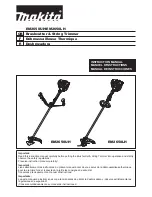
Field Measurements
5:8
CP 1 – Cathodic Protection Tester Course Manual
©
NACE International, 2000
02/01/05
Measuring Current
One of three methods–an ammeter, a clamp on ammeter, or a current shunt
can be used to obtain a current measurement.
Use of an Ammeter
When measuring current flow in an electrical circuit, the ammeter is
connected in series with the circuit. A series connection is made when the
circuit is broken and current flow of the external circuit must go through
the meter to complete the circuit as illustrated in Figure 5.5.
+
_
+
_
AMPS
Series Connection
R
A
R
B
R
C
E
Figure 5.5 Ammeter Connection
There are a wide variety of ammeters available today. The most important
requirement of an ammeter for cathodic protection surveys is its internal
resistance. The internal resistance of an ammeter should be low to prevent
adding resistance to the external circuit, thus reducing the current of the
external circuit.
Caution:
because of this low internal resistance, it is
important not to set your multimeter on the ammeter when attempting to
measure voltage. This can blow a fuse or damage the meter.
In practice, even the low internal resistance of an ammeter will affect
current flow in a galvanic anode system. Therefore, current shunts are
usually installed in the permanent circuit of a galvanic anode system (not in
anodes connected directly to the structure, however). In fact, due to
accuracy current shunts are favored over using an ammeter in most cases.
A current measurement using an ammeter requires more caution than
voltage because the circuit has to be broken. Power of the external circuit
should be de-energized before breaking the circuit and inserting an
Содержание CP 1
Страница 1: ...CP 1 Cathodic Protection Tester Course Manual February 2005 NACE International 2000 ...
Страница 265: ......
Страница 266: ......
Страница 267: ......
Страница 268: ......
Страница 301: ...RP0169 2002 32 NACE International ISBN 1 57590 035 1 ...
Страница 535: ...TM0101 2001 24 NACE International ISBN 1 57590 137 4 ...
















































